
* Corresponding author
E-mail address: andriansyah@dsn.moestopo.ac.id (A. Andriansyah)
© 2019 by the authors; licensee Growing Science.
doi: 10.5267/j.uscm.2019.1.001
Uncertain Supply Chain Management 7 (2019) 793–804
Contents lists available at GrowingScience
Uncertain Supply Chain Management
homepage: www.GrowingScience.com/uscm
Critical evaluation of policies in supply chain performance: Quality assurance, continuous
process improvement and environmental regulation and policies
Andriansyah Andriansyaha*, Taufiqurokhman Taufiqurokhmana and Ismail Suardi Wekkeb
aUniversitas Prof. Dr. Moestopo (Beragama), Indonesia
bSekolah Tinggi Agama Islam Negeri (STAIN) Sorong, Indonesia
C H R O N I C L E A B S T R A C T
Article history:
Received November 4, 2018
Received in revised format
December 20, 2018
Accepted January 2 2018
Available online
January 2 2019
The primary objective of this study is to find the role of different policies on supply chain
performance (SCP). To achieve this objective, quality assurance policies (QAP) and
continuous process improvement (CPI) are selected as independent variables. Additionally, the
moderating effects of environmental regulations and policy (ERP) are examined between
various policies and SCP. ERP is taken as moderating variable because the role of ERP in
logistics is crucial. Logistics transport has serious effect on environment due to the emission
of CO2. Primary data are collected from supply chain companies of Indonesia. Three hundred
questionnaires are used in this study and they are analyzed through statistical tests. Conclusion
of the study shows that QAP and CPI had major role in SCP. Better implementation of QAP
and CPI increase the SCP among Indonesian supply chain companies. Moreover, ERP is a
moderating variable between the relationship of QAP and CPI and SCP. Therefore, Indonesian
supply chain companies should enhance the policies related to quality assurance, process
improvement and environmental policies to enhance SCP.
., Canada
b
y the authors; licensee Growing Science2019 ©
Keywords:
Supply chain performance
Quality assurance policies
Continuous process
improvement
Environmental regulations
and policy
1. Introduction
Supply Chain is a system between an organization and various suppliers to distribute a product to the
ultimate customers (Christopher, 2016; Rushton et al., 2014). It consists of people, activities, resources
and information involved in moving a product as well as service from supplier to the specific customer
(Hugos, 2018). Logistics is one of the essential and major part of supply chain (Rushton et al., 2014).
Logistics consists of heavy transportation to carry goods from one place to another, most importantly,
to reach goods to the customers who ordered the goods (Suryanto et al., 2018).
Performance of supply chain companies is important for every country. As the supply chain is one of
the major economic instruments. Most of the countries are working hardly to enhance supply chain
performance (SCP). Indonesia is one of the emerging countries trying to enhance SCP. However, the
Indonesian supply chain industry is facing various issues related to the quality assurance. As the quality
assurance is an important element of supply chain (Sroufe & Curkovic, 2008), that is the reason it has
significant impact on performance. According to Fearne et al. (2001), it is one of the key segment of

794
supply chain which has influence on performance. Good SCP requires a reasonable level of quality
assurance policy (QAP) (Aung & Chang, 2014;Kigpiboon, 2013; Henry, 2014; Bank & Bank, 2014;
Adebambo et al., 2014; Zomorrodi & Zhou, 2017).
Therefore, Indonesian supply chain industry must incorporate good quality assurance practices in
supply chain. Secondly, Indonesia supply chain companies are facing issues in continuous process
improvement (CPI). CPI is important to maintain the quality among supply chain firms. CPI is not only
important in supply chain but also it is important for all companies. A study conducted by Diekola
(2016) in Malaysian food and beverages industry found that both the QAP and CPI had significant
positive impacts on performance. Thus, Indonesian supply chain industry must adopt QAP and CPI to
boost performance and to resolve various issues. Additionally, as mentioned above, logistics is the big
part of supply chain process which consists of transportation. Heavy transportation has negative effect
on environment through CO2 emission (Gideon, 2014; Zheng et al., 2017; Luong et al. 2017; Zhang,
2017; Al-Fatlawi, 2018; Baran & Yilmaz, 2018). This negative impact can be resolved with the help
of environmental regulations and policy (ERP). ERP has significant influence to enhance the
performance of supply chain.
Hence, the objective of this study is to examine the effect of critical evaluation of policies in SCP
among Indonesian supply chain companies. Moreover, the other objectives of the study are as follows;
1. To investigate the effect of QAP on SCP.
2. To investigate the effect of CPI on SCP.
3. To investigate the moderating effect of ERP.
Fig. 1. Framework showing that how QAP, CPI and ERP effect on SCP
Source: Developed by the author
2. Literature Review
2.1 Quality Assurance Policy (QAP)
Quality assurance is the element of Total Quality Management (TQM). Policies against quality
assurance is most important to sustain performance among supply chain companies. Quality assurance
includes the idea of orderly administration and evaluation systems used to guarantee accomplishment
of quality yields or progressed quality. Quality assurance, in light of extensive survey has three phases,
Quality Assurance Policy
(QAP)
Strategic Planning
Process focus
Delivery
Continuous Process
Improvement (CPI)
Supply Chain
Performance (SCP)
Environmental
Regulation and
Polic
y
(
ERP
)

A. Andriansyah et al. /Uncertain Supply Chain Management 7 (2019)
795
including; design of planning, process focus and delivery (Abdous, 2009). Quality assurance policies
has the tendency to enhance performance of supply chain by satisfying the customers and enhance
profitability.
Alkafaji (2007) analysed quality assurance survey projects of auditing firms from international point
of view. The reason for the examination is to thoroughly analyse quality assurance survey programs in
various parts of the world with the end goal to recognize likenesses and qualifications in these projects.
An overview for data was sent to the accounting administrative bodies who are individuals from the
international federations of accountants (IFAC). The outcome demonstrated that nations with
noteworthy stock markets have a tendency to require quality assurance projects of their firms while
nations of less massive stock markets tend not to require such projects. These quality assurance
practices have significant role on supply of goods. As there is a strong relationship between quality
assurance and supply chain quality performance (Fynes et al., 2004; Fynes et al., 2005; Ekpung, 2014;
Chidoko, 2014; Zomorrodi & Zhou, 2016; Danbaba et al., 2016; Marshal, 2017; Marshal, 2017; Mušić,
2017; Chen et al., 2018; Al-Fatlawi, 2018).
Töremen et al. (2009) demonstrated that in quality, the duty regarding quality is positioned in both the
people and group through some formative procedures which speaks to a way to deal with quality
assurance to be more understanding with the structures and basic morals of instructive associations than
more robotic and progressive procedures. Systems for quality assurance on enterprises have developed
interminably as per the innovative changes that have denoted the fast development of society (Cătălin
et al., 2014). Tran et al. (2011) clarified that ISO was produced from Quality Assurance; Quality
Assurance empowered the event of quality administration amid the new-item advancement process and
concentrated on nonstop enhancement as a key quality administration. The framework of Miles et al.
(1978) in Fig. 2 can be utilized to distinguish between companies that are involved in ISO registration
only because customers need it and to support certain characteristics of quality assurance.
High Defenders Prospectors
ISO 9000:2000
Integration
Reactors
Analysers
Low High
Fig. 2. ISO integration and supply chain quality assurance
Source: Miles et al. (1978)
Cheong Cheng (2003) described quality assurance in respect to interface, internal and future education.
The investigation opined that quality assurance is isolated into three extraordinary ideal models in
training. First, inside quality assurance that enhances the inside condition and process to such an extent
that the feasibility of learning and educating can be guaranteed to accomplish the arranged objectives.
Second, interface quality assurance guarantees that training administrations fulfil the requirements of
partners and are assessable to general society openness. Third, future quality assurance which
highlights on guaranteeing the importance of aim, practices and results of training to the education to
the future of new generations worldwide, data innovation and the information driven economy. In
understanding quality assurance, Choon Boey Lim (2008) led a cross-country contextual investigation
by looking into on understanding quality assurance. The motivation behind the investigation is to work
on the elements of quality assurance approach usage inside and crosswise over foundations. Interviews
were directed, and information were received in Malaysia. The investigation uncovered that quality
assurance might not be healthy in cases if the organization is suffering with internal problems. herefore,
it requires plaining, produces and delivery to enhance quality assurance in supply chain companies.

796
H1: QAP has positive effect on SCP.
2.2 Continuous Process Improvement (CPI)
One of the regularly debated TQM components in literatures is continuous improvement or continuous
process improvement (Intra & Zahn, 2014; Jørgensen et al., 2003). Continuous improvement has turned
out to be an intense device in companies (Krittanathip et al., 2013). Furthermore, from the components
of TQM, all issues are exceptionally organized because of continuous improvement, with the end goal
to upgrade the better performance of company (Suárez-Barraza et al., 2009).
As indicated by Adina-Petruţa and Roxana (2014), intensity, advancement and performance are the
objectives of the present business conditions under the given ideas, for example, quality and continuous
improvement are vital stimuli in accomplishing this objective. Their investigation centres around
coordinating six-sigma with quality administration for the advancement and continuous improvement
of higher training foundations. The discovering demonstrates that continuous improvement is
accomplished by estimating the quality of processes and results of research and useful items. Moreover,
it is contended that continuous improvement to be effectively established through cooperation
(Atkinson, 1994). According to various studies, continuous improvement has important influence on
supply chain (Hyland et al., 2003). However, the political influence of stock return and economic
factors can make the difference (Basheer et al., 2019; Maqbool et al., 2018). Christofi et al. (2008)
expressed that, continuous process improvement is viewed as one of the TQM standards. Ellis and
Castle (2010) conceptualized a parallel connection between continuous process improvement and
instructor research by laying out the basic attributes and processes. Jung and Wang (2006) examined
the association between TQM and continuous improvement. Data was obtained by a cross sectional
method from 100 middle levels to senior level managerial employees to examine the hypotheses. The
research study recommends that the mutual association between soft TQM fundamentals and
continuous improvement is much significant as compared with the relationship among hard TQM
fundamentals. A study conducted by Chapman and Corso (2005) found that continuous improvement
and collaborative innovation had significant positive connection with each other which had influence
in supply chain. Collaboration increases the innovation, as mentioned by Hameed et al. (2018), which
increases the performance of supply chain. Therefore, continuous process improvement increases the
supply chain performance.
H2: CPI has positive effect on SCP.
2.5 Environmental Regulation and Policy (ERP)
Environmental quality is measured through the degree in which ERP is being appropriately followed.
It is a feature of the supervisory socio-natural connection, the functional significance of which depends
on the capability to reflect the maximum procedures of environmental safety techniques (Chervinski,
2014). ERP has strong connection with supply chain, as increases in logistics increases the Carbon
emission. The demand for convincing environmental regulation on item end-of-life and generation
processes is upgraded by customer concerns in respect to the environmental factors (Santos-Reyes &
Lawlor-Wright, 2001). Esty et al. (2005) communicated about the environmental issues dependent on
environmental sustainability index of environmental related concerns. The investigation demonstrated
that no environmental protection and laws issues had been discussed widely as far as the environmental
contamination issues are concerned. The study demonstrated that the environmental data, straight
forwardness and responsibility, sufficient limit with regards to trustworthy requirement and different
strategies would advance the better environmental performance. As the supply chain is majorly related
to the transport and transport is related to the environmental issues (Hensher & Button, 2003; Hesse &
Rodrigue, 2004), therefore, environmental issues may influence on supply chain. Leshinsky (2012)
expressed that the utilization planning to help maintainability and environmental protection through a
logical structure that would draw cooperative planning theory and practice for arranging and
understandings together can be utilized as an instrument to protect environmental qualities and

A. Andriansyah et al. /Uncertain Supply Chain Management 7 (2019)
797
standards. The findings uncovered that environmental policies may have set up great system and
practice to save the earth. The understandings of the policies as an environmental instrument can reduce
the negative impact on environment. Reduces in negative effect on environment has positive role in
supply chain performance. Madu et al. (1995) explained that numerous companies have not considered
the capability of normal environmental quality planning which causes to effect on organization's item
quality, growth and competitive advantage. Apart from other companies, it is more important for supply
chain companies. As the emission of CO2 from logistics transport decreases the environmental safety
(Kim et al., 2009).
H3: ERP has positive effect on SCP.
H4: ERP moderates the relationship between QAP and SCP.
H5: ERP moderates the relationship between CPI and SCP.
3. Research Methodology
3.1 Data Collection Procedure
Data is the set of information needed to test the hypotheses. In this study, the employees of supply
chain companies were preferred to take the data. Firstly, the email addresses of employees were
gathered from the head offices of companies. After that emails were sent to them by attaching the
survey questionnaire. Objective of the study and instructions to fill the questionnaire were also
described in the email. Data were collected from Indonesia. Supply chain companies were selected to
collect the data. Supply chain company’s employees were selected as respondents. Therefore,
questionnaires were distributed among the employees of Indonesian supply chain companies by using
simple random sampling. Data collection was carried out during the period May, 2018-June, 2018. In
the month of May, the questionnaires were distributed with the help of email. After 15 days on 15 May,
first remainder was sent to those respondents who did not respond. Second remainder were sent on 01
June. Finally, the third remainder was sent on 15 June. The response rate is give in below Table 1.
Table 1
Response from respondents
Response Frequency/Rate
Total questionnaires distributed 300
Total questionnaires returned 210
Total Useable questionnaires 203
Total questionnaires excluded 07
Total response rate 70%
Total useable response rate 67.6%
3.2 Sample Size
Different studies provide various methods to determine the sample size. Most of the studies suggested
that sample size should be based on the total population. In this case, total population of Indonesian
supply chain companies is required. It was found that the total population is not known. Therefore, in
that case the instructions of various studies to take 300 sample size was preferred. Thus, the study used
300 sample size to collect the data.
3.3 Sampling Technique
Due to the limitation of cost and time, the current study followed simple random sampling technique
to collect the data from the employee of supply chain companies in Indonesia. First of all, the lists of
employees were obtained from different companies, after that the respondents were selected from this
list randomly.


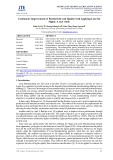
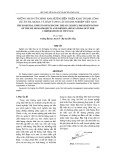
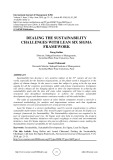

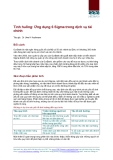
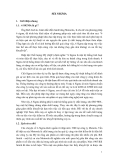





![Tối ưu hóa hiệu suất hệ thống: Bài thuyết trình [Chuẩn nhất]](https://cdn.tailieu.vn/images/document/thumbnail/2025/20251107/hiepdz2703@gmail.com/135x160/35941762488193.jpg)
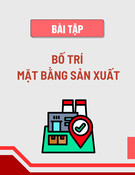
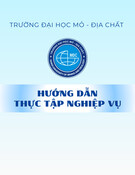

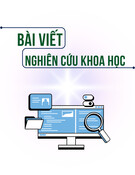
![Bài giảng Quản trị chất lượng trong công nghiệp thực phẩm [chuẩn nhất]](https://cdn.tailieu.vn/images/document/thumbnail/2025/20250805/vijiraiya/135x160/637_bai-giang-quan-tri-chat-luong-trong-cong-nghiep-thuc-pham.jpg)

![Đề cương bài giảng Kỹ năng hoạt động công nghiệp [mới nhất]](https://cdn.tailieu.vn/images/document/thumbnail/2025/20250715/kimphuong1001/135x160/76971752564028.jpg)


![Bài giảng Kỹ thuật điều độ trong sản xuất và dịch vụ [mới nhất]](https://cdn.tailieu.vn/images/document/thumbnail/2025/20250630/dcbaor/135x160/13121751251866.jpg)


